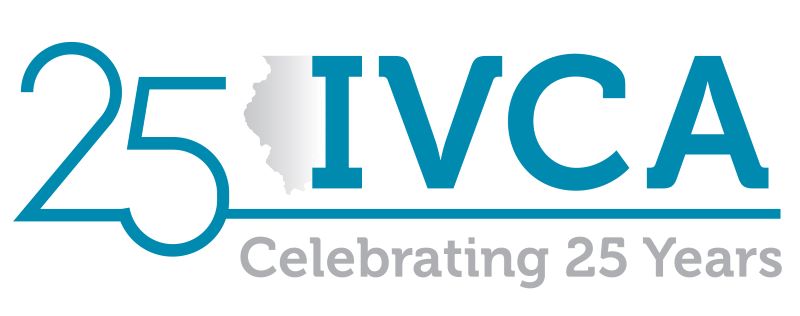2010 Portfolio Company Hall of Fame
DeVry, Inc.

Management: Ronald Taylor, Senior Advisor and Retired CEO
Venture Capital Partner: Frontenac Company
In 1931, a Chicago-area engineer and inventor established a school specializing in the growing technical fields of electronics, motion pictures and radio. More than 75 years and several transitions later, Herman DeVry's school - DeVry, Inc. - ranks among the nation's largest higher-education companies.
The DeForest Training School, its original name, expanded quickly. As new pioneering fields emerged such as television, the technical school began to offer more classes and degree options in them. By 1966, the school had changed its name to the DeVry Technical Institutes. That year, Bell & Howell Education Group, based in Skokie, purchased DeVry and expanded it to 11 locations in eight states and two Canadian provinces.
Over the years, Bell & Howell also increased DeVry's degree and class offerings, adding business and telecommunications management specialties. Ultimately, however, the company encountered financial difficulties and, in 1987, Bell & Howell was ready to sell its DeVry branch.
Enter Keller, Taylor, and Frontenac
Dennis Keller and Ronald Taylor have a lot in common. Both men worked as executives for DeVry earlier in their careers and later co-founded the Keller Graduate School of Management, a for-profit institution offering advanced degrees in business. Given their experience, they viewed the DeVry purchase as a prime investment opportunity.
With DeVry's "For Sale" sign up, Mr. Keller and Mr. Taylor began a search for investors. They approached the Frontenac Company about leading a group in acquiring the business. The Chicago-based Frontenac, founded in 1971, favors working with proven executives to acquire and grow successful middle-market businesses and today has more than $1 billion under active management.
In the two former DeVry executives, Frontenac identified one of its most important requirements for success-a strong, experienced management team who knew the company. DeVry also offered a large market opportunity and excellent growth prospects.
These strong attributes, along with the belief that DeVry overhead costs could be pared, served as the basis for Frontenac's investment philosophy for the buyout. Frontenac Chairman and Managing Director Rodney L. Goldstein says DeVry illustrated the classic case of an undermanaged pision of a larger company that could thrive independently; it was a "corporate orphan." Frontenac raised more than $12.6 million in capital and led a group of investors that included Messrs. Keller and Taylor, and others in a leveraged buyout of DeVry. Bell & Howell sold its 85 percent stake in the company to the Keller Graduate School of Management and, subsequently, its investors. In all, the buyout totaled $147 million.
After the acquisition, DeVry merged with Keller and began to expand into new programs and geographies. Eventually, the company changed its name to DeVry University. It quickly began to thrive as its new owners reduced bureaucracy and improved the investment of resources. At the time of the buyout, DeVry had $150 million in annual revenue; 20 years later, it generates $933 million and its equity market capitalization exceeds $2.5 billion.
DeVry also has expanded geographically and now has more than 80 locations in the U.S. and Canada. It reaches even more students via the Internet, offering many of its courses and degree programs online. The number of locations, coupled with online options, gave DeVry a student population of 52,000 in the fall of 2006.
DeVry supplemented its organic growth through acquisitions of three other educational companies: Becker Professional Review, which provides preparatory courses and reviews to financial professionals, in 1996; Ross University, a medical and veterinary school in the Caribbean, in 2003; and Chamberlain School of Nursing, which offers associate and bachelor's degrees, in 2005.
In 1991, after an initial public offering, DeVry stock began trading on the NASDAQ stock exchange and, four years later, it began trading on the New York Stock Exchange.
DeVry has grown from $185 million in revenues at the time of the Frontenac acquisition nearly a quarter century ago and today is part of the S&P Index. DeVry now employs more than 10,000 people in faculty, administrative and other staff positions in Illinois, throughout the U.S. and Canada at more than 300 locations internationally. That workforce, including its headquarters staff in Downers Grove, Ill., and the teaching positions at its Illinois campuses, make DeVry an excellent employment resource to the state. Add the thousands of students who attend DeVry and receive degrees in Illinois (85 percent of whom seek employment in the state after graduation) and DeVry's impact on the state's employment is extremely significant.
Since DeVry went public, Frontenac has left the fold of DeVry investors. But its funds allowed a prosperous, overlooked arm of a larger company to pull away and re-establish itself as one of the country's largest educational companies.
|
What DeVry Means to Illinois
-A well-established company with more than 75 years in the Chicago area -11 Illinois campuses provide training and career opportunities for residents. -90 percent of job placements are in a related field of study -More than 1,500 jobs-1,300 alone at its headquarters in Oakbrook Terrace |
How Venture Capital Benefited DeVry -Allowed for buyout to separate the thriving business from a floundering parent. -Provided capital for further acquisitions and expansions. -Paved the way for initial public offering to gain further funds |


